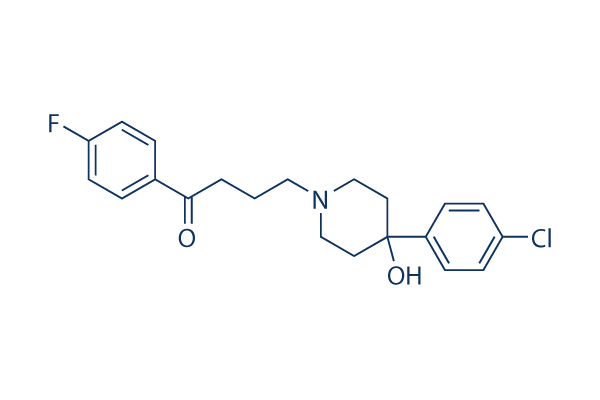Haloperidol (Haldol) is a medication that belongs to the family of drugs called antipsychotics. It can be used in the treatment of both schizophrenia and bipolar disorder.
The most important information you should know about Haloperidol includes potential side effects, what to discuss with your doctor before taking it, how to take it safely, and more.
Contents
- 1 What Is Haloperidol (Haldol)?
- 2 What Does Haloperidol (Haldol) Treat?
- 3 Important Information I Should Know About Haloperidol (Haldol)
- 4 Possible Side Effects Of Haloperidol (Haldol)
- 5 Risks For Taking Haloperidol (Haldol) For Long Periods Of Time
- 6 Medications May Interact With Haloperidol (Haldol)
- 7 How Long Does It Take For Haloperidol (Haldol) To Work?
- 8 Conclusion
What Is Haloperidol (Haldol)?

Haloperidol is a prescription medication that belongs to a class of drugs called antipsychotics. It is used to treat certain mental and emotional conditions such as schizophrenia, bipolar disorder, and Tourette’s syndrome. Haloperidol may also be used to control severe nausea and vomiting.
What Does Haloperidol (Haldol) Treat?
Haloperidol is used to treat certain mental and emotional conditions such as schizophrenia, bipolar disorder, and Tourette’s syndrome. It may also be used to control severe nausea and vomiting.
What Should I Discuss With My Doctor Before Taking Haloperidol (Haldol)?
You should talk with your healthcare provider before taking haloperidol if you have:
- Heart block,
- Low white blood cell counts, or
- Blood circulation problems such as Raynaud’s disease
How Should I Take Haloperidol (Haldol)?
Take haloperidol exactly as prescribed by your healthcare provider. Do not take in larger or smaller amounts or for longer than recommended. Follow the directions on your prescription label. Your doctor may occasionally change your dose to make sure you get the best results.
NOTE: Haloperidol can be taken with or without food.
What Happens If I Miss A Dose Of Haloperidol (Haldol)?
Take the missed dose as soon as you remember. Skip the missed dose if it is almost time for your next scheduled dose. Do not take extra medicine to make up for the missed dose.
What Should I Avoid While Taking Haloperidol (Haldol)?
Do not drink alcohol while taking haloperidol. It may increase some of the side effects of this medication, such as drowsiness and dizziness. Do not drive or perform other possibly unsafe tasks until you know how haloperidol affects you.
What Happens If I Overdose With Haloperidol (Haldol)?
If an overdose occurs, call your doctor or poison control center right away. You may need emergency treatment. Symptoms of a haloperidol overdose include:
- Drowsiness,
- Fainting,
- Confusion,
- Blurred vision,
- Muscle stiffness or twitching
Important Information I Should Know About Haloperidol (Haldol)
You should not take haloperidol if you are allergic to it, or if you have:

- Blood circulation problems (such as Raynaud’s disease),
- Heart block,
- Heart failure,
- Liver or kidney disease,
- Low white blood cell counts
Specific Concerns About Haloperidol (Haldol) And Pregnancy
Haloperidol has been assigned to pregnancy category C by the FDA. Animal studies have shown reproductive toxicity at maternally toxic doses, but there are no controlled data in human pregnancy.
Haloperidol should be used during pregnancy only if the potential benefit justifies the potential risk to the fetus.
Possible risks to the fetus include:

- Neuroleptic malignant syndrome,
- Tardive dyskinesia, and
- Withdrawal symptoms after delivery
NOTE: Haloperidol can pass into breast milk and could harm a breastfeeding baby. Do not take this medication while breastfeeding without first talking to your healthcare provider.
Possible Side Effects Of Haloperidol (Haldol)
Common Side effects
Haloperidol may cause side effects, which can vary depending on the person. Some people may experience:
- Drowsiness,
- Restlessness,
- Anxiety,
- Nausea and vomiting, or
- Diarrhea
Severe Side effects
- Uncontrolled muscle movements (e.g., tremor, twitching),
- Skin rash or hives,
- Redness of the face and neck, or
- Itching (with a severe reaction) may lead to skin peeling in severe cases
Risks For Taking Haloperidol (Haldol) For Long Periods Of Time
Some risks come with taking haloperidol for long periods. These may include:
Tardive Dyskinesia (a movement disorder)
Tardive dyskinesia (TD) is a potentially irreversible syndrome. It consists of involuntary movements of the face, tongue, or extremities. However, it may occur after long-term use of antipsychotic drugs.
The risk of developing TD increases with the duration of treatment and cumulative dose. Although there is no known cure for TD, discontinuation of the offending agent or use of appropriate medications may reduce symptoms.
Neuroleptic Malignant Syndrome
A neuroleptic malignant syndrome is a rare but life-threatening adverse reaction associated with haloperidol use. It typically occurs within the first few weeks of treatment and is characterized by fever, muscle rigidity, altered mental status, and autonomic instability.
Metabolic syndrome
Metabolic syndrome is a condition that affects the body’s ability to use sugar properly. It can lead to obesity, high blood pressure and cholesterol levels, and other health complications.
Parkinsonism
Parkinsonism is a neurological disorder characterized by tremors and muscular rigidity. It may occur in some people who use haloperidol.
NOTE: Parkinsonian symptoms may persist during withdrawal of the drug. Other extrapyramidal reactions such as akinesia or cogwheel rigidity can occur long after discontinuation.
Medications May Interact With Haloperidol (Haldol)
Haloperidol may interact with other medications including:
- Antidepressants such as fluoxetine (Prozac), paroxetine (Paxil), and sertraline (Zoloft),
- Benzodiazepines such as alprazolam (Xanax) and lorazepam (Ativan),
- Antipsychotics, Monoamine oxidase inhibitors (MAOIs), Carbamazepine (Tegretol) and phenytoin (Dilantin),
- Rifampin (Rifadin, Rimactane) or
- Quinidine (Quinidex)
How Long Does It Take For Haloperidol (Haldol) To Work?
Some people may notice that haloperidol starts working right away, while others may need to take the medication for a few weeks before they begin to feel better.
Conclusion
Haloperidol is an antipsychotic drug. It is helpful to treat mental health conditions such as schizophrenia and bipolar disorder. Some common side effects include drowsiness, restlessness, anxiety, nausea, and vomiting, or diarrhea. Some risks come with taking haloperidol for long periods, including the development of tardive dyskinesia. It is important to discuss all risks and benefits with your healthcare provider before starting treatment with haloperidol.
If you are looking for affordable Online Counseling MantraCare can help: Book a trial therapy session


